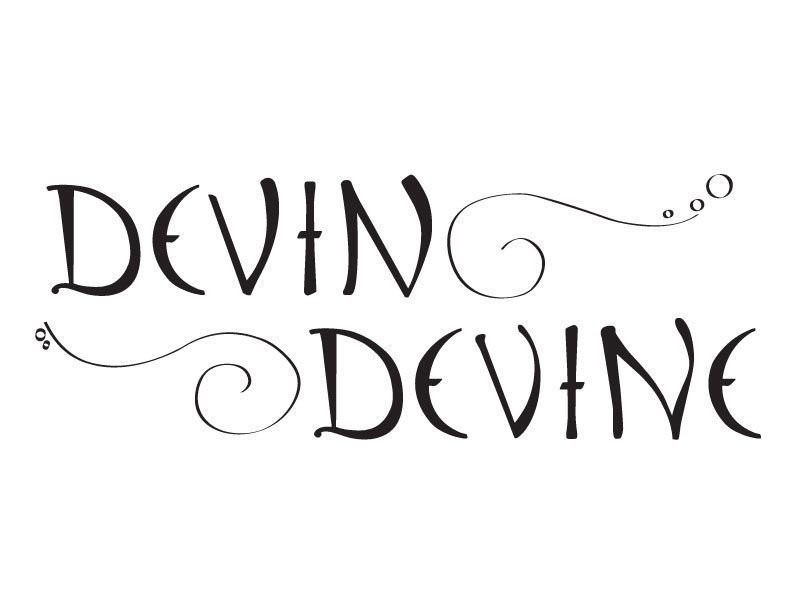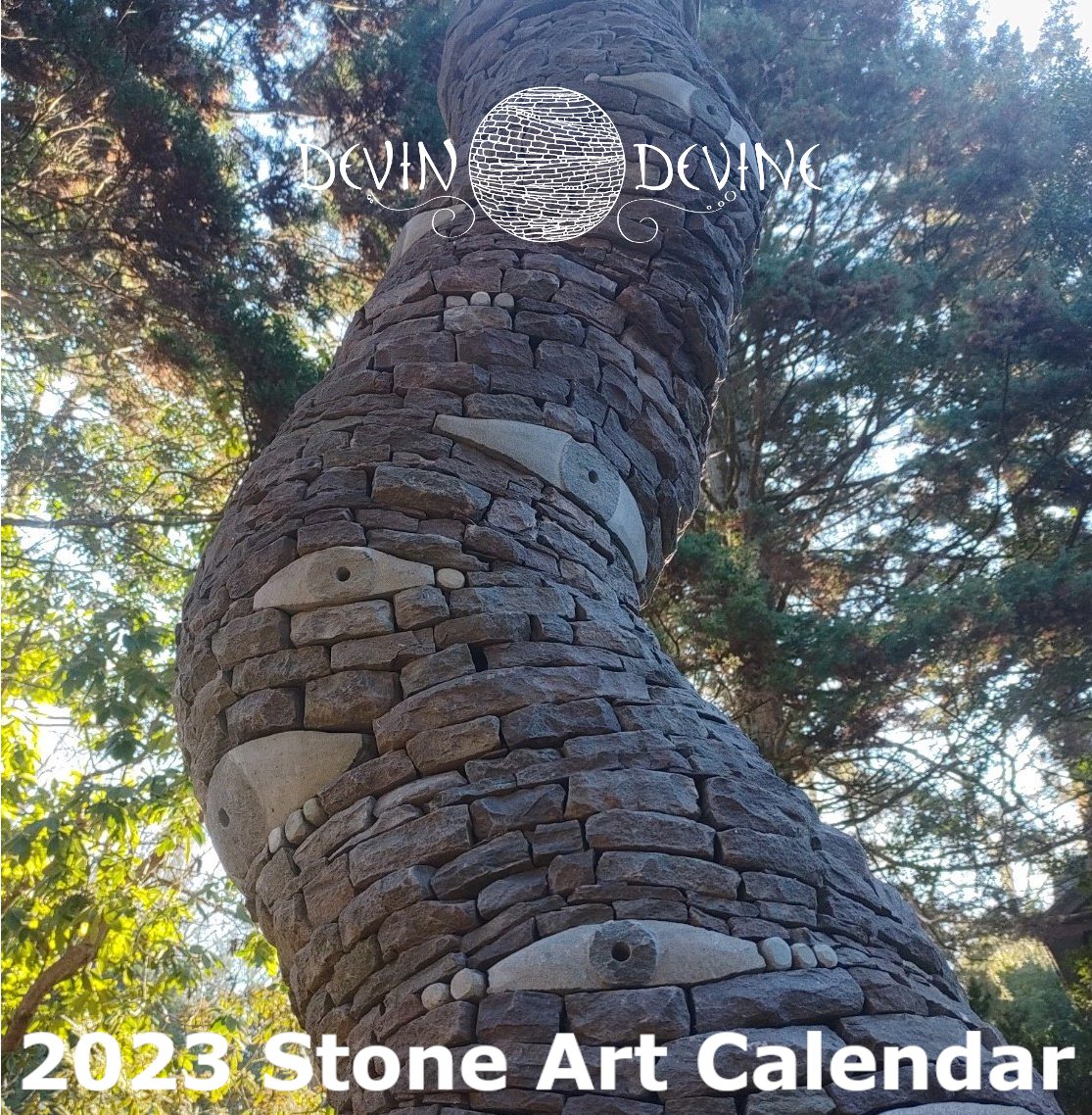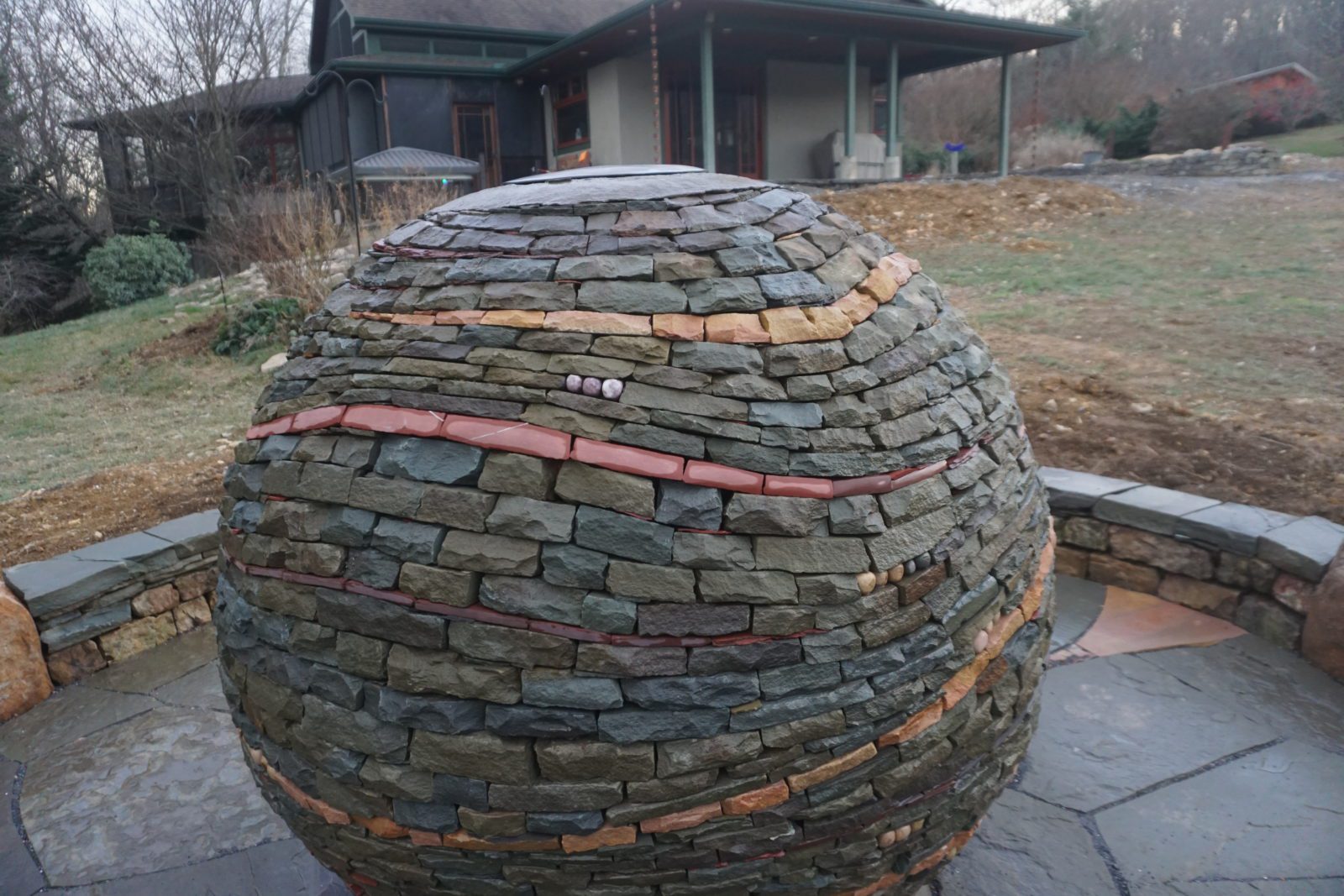Devin Devine, stone masonry consultant
devin@devineescapes.com
Here’s a funny/odd example of the sorts of masonry consultation work I do.
Obviously, there’s other contractors out there who are great guys–but doing masonry consultation work, I often get to find out about another, different sort of contractor, and their “works”.
So I got an email, requesting help with some masonry consultation work. The story is this:
- a couple thousand square feet of flagstone work had been installed, poorly, by some contractor in Brooklyn
- Stone veneer work had also been done, as well as flagstone treads and sills
- The big problem that I was first contacted about, was the mortared joints, which were ALL failing, in less than a year
I did a phone consultation, looked at photos, listened to the homeowner. and offered my opinions, by email. Later, the homeowner decided to pay me to do a site visit.
during the masonry consultation, I found a host of problems:
- mortar joints separating from the flagstone–systemically. Every stone.
- hollow sound to the flagstones, when struck with a mallet
- Many small “flagstones” that were like 3″ big–on the edges of the walkway
- bluestone window sills–with inconsistent flaming and rock facing
- Wall caps and step treads, in bluestone–again, with inconsistent flaming and inconsistent rock-facing. Some stones were rock-faced, some stones were flamed–and others were saw-cut, with no facing.
- The veneer work, of course was riddled with vertical joints.
What’s even crazier, is that a couple months after the installation is completed, the customer contacts the contractor about these issues. The contractor’s response–is to text the customer a photo of himself giving the camera the middle finger! What’s even more crazier is how much that patio, stone veneer, columns and steps cost. The job was expensive, as any good masonry job ought to be. This one wasn’t good though.
Rates for DIY consultations are as follows:
$80.00 for a half hour consultation
$125.00 for a full hour
Monies are payable via PayPal, or Venmo,
So what went wrong with all that bluestone installation?
A few things.
- Hollow sound under stones and separating joints. You can tell they set the stones in a deep bed–because of the hollow sound. The deeper mortar bed is a common enough trick–it makes it easier and faster to level the stones. But the problem is that mortar shouldn’t be thicker than an inch and a half at the most–thicker than that, will be weak, because mortar is weaker than stone or concrete. When you have a job like this one, where there’s dozens of stones with hollow sounds when tapped, this is a strong sign that the mortar was too thick, and thus the stone didn’t get good contact with the mortar. This happens because they put too much mortar down there, then they put a stone on top of the mortar–and the stone sat at close to the correct height, already, without much pushing down. Thus, little contact was achieved. In other places they probably put down too much mortar–and had to use the mallet to tap tap tap the stone down to correct level. This causes poor adhesion. Always get your beds right.
- The mortar used was also too wet. You could tell by looking at the joints, that soupy mortar was used. Like with the thicker mortar beds, too wet of mortar will help the job get done fast–but will cause it to fail sooner. The thing is, you can break these rules and get away with it–often it takes 2 or 3 years for a poorly done job to fail. You can tell the joints were too wet, because the mortar is bright white. Too much water = a lighter than usual mortar color. The soupy mortar will be weaker and also is more likely to separate from the stone. I see this sort of thing often, on masonry consultations like this. Wetter = stickier, but also weaker.
- They did this huge wet laid job in late November. Temperatures probably got too cold. Who knows if the added em hydro or thermo lube or any other set accelerator/anti-freeze into their mortar? If mortar freezes before it sets–there will be problems. I wasn’t there, don’t know how cold it got those days, but the customer claimed that they pointed the entire 2,000 square foot patio in a day or two–and the weather was freezing the night after.
- The veneer work–they left tons of vertical joints. Some joints were 3″ wide.
- The step treads–just laziness here. Or lack of knowledge/skill? They purchased thermal tread stone and installed it, for the steps and wall caps. But tread stone comes flamed, from the quarry–but usually only on one side. The mason installer needs to decide which sides of the stone will be visible and is responsible to flame those sides himself. Some stones they had were rock faced, some thermal, and some were saw-faced.
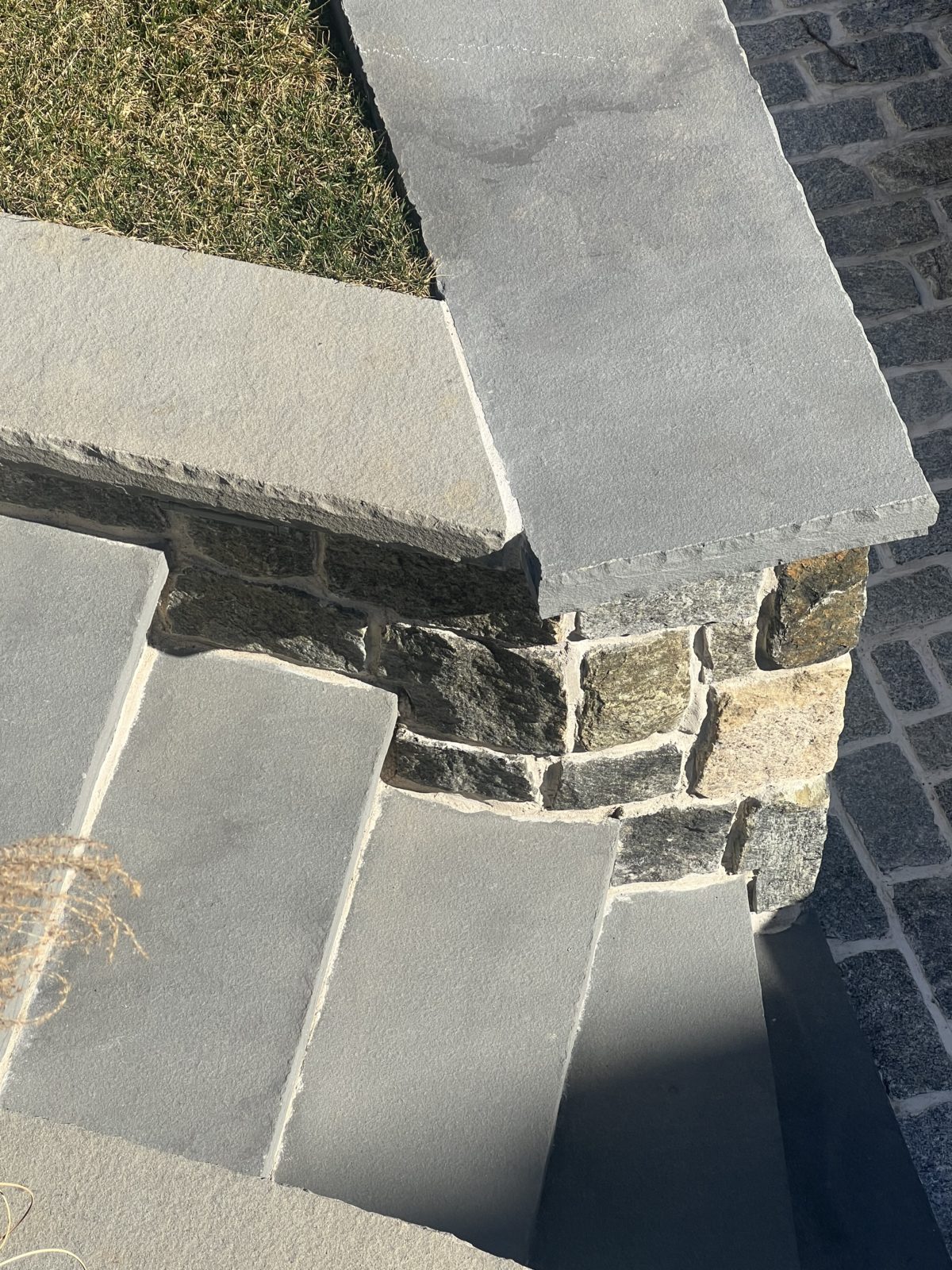
Does something look funny to you–about this cap stone? Like, maybe someone didn’t cut it exactly perfectly? This was a hazard–a place to bump your elbow!
Sometimes, masonry consultation jobs become masonry repair jobs
I had a day, in between larger projects, and drove to Brooklyn to handle the flaming and rock-facing.
RELATED CONTENT: dry stone walls in the Poconos
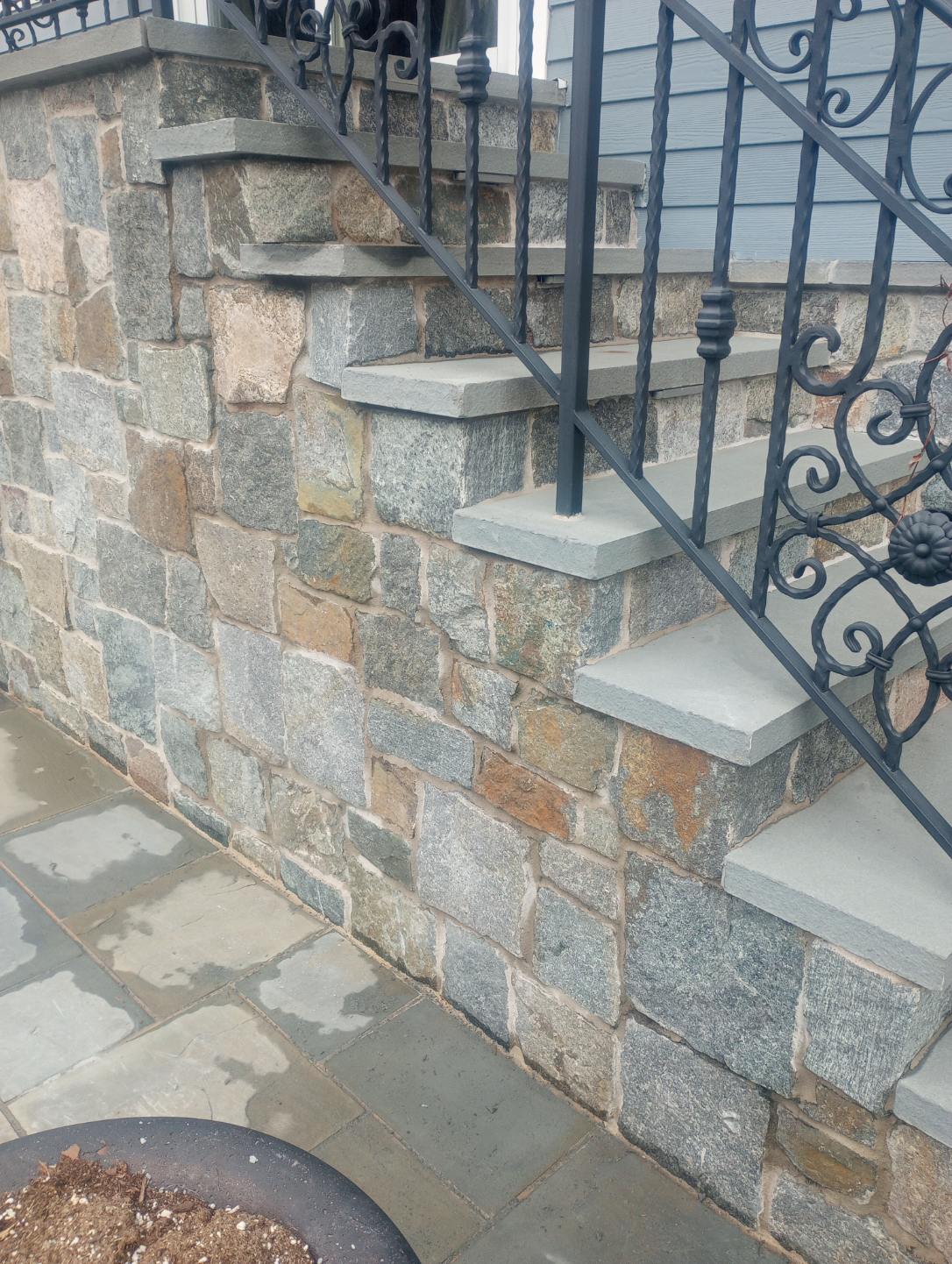
Dude, this took me 5 minutes, tops, to thermal finish the ends of these treads. How can you leave a job unfinished when it only takes five minutes? And YES, there’s more mistakes present, then just the ones I’ve mentioned so far! IDK if I can bring myself to post more photos of this guy’s “work” though, in order to show you my fixes.
Since 2013 my stone masonry and hardscaping instruction articles have helped thousands of homeowners, as well as contractors and tradesmen. If you find my articles useful, then I’ve made it easy for you to express gratitude–DONATE To support this work
Stone Masonry Sculpture by Devin Devine
Check out my gallery of Stone Masonry Sculpture, before you leave:
Thank You
